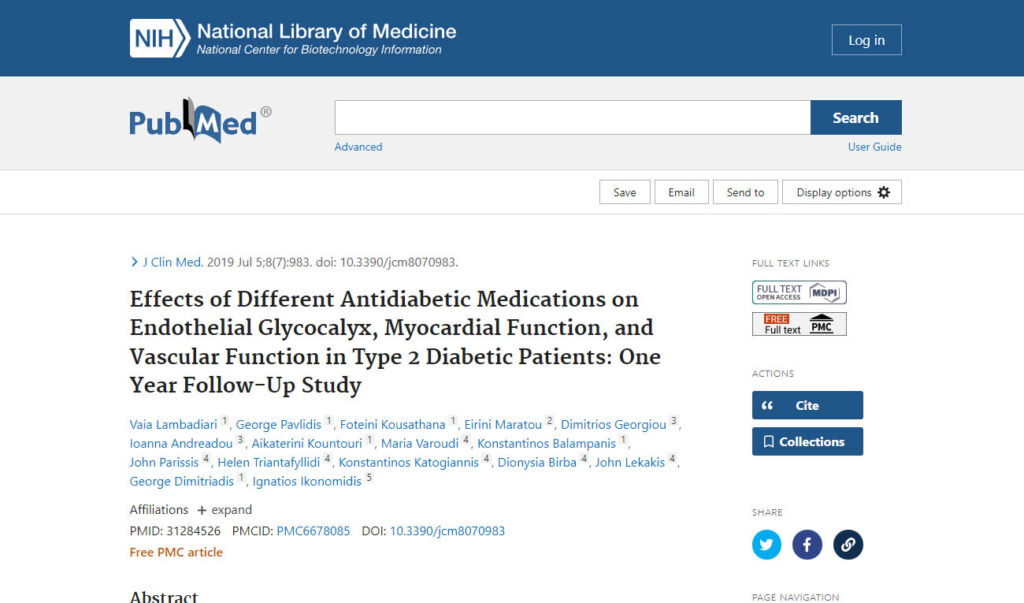Abstract
Background: Poor glycaemic control affects myocardial function. We investigated changes in endothelial function and left ventricular (LV) myocardial deformation in poorly controlled type 2 diabetics before and after glycaemic control intensification.
Methods: In 100 poorly-controlled diabetic patients (age: 51 ± 12 years), we measured at baseline and at 12 months after intensified glycaemic control: (a) Pulse wave velocity (PWV, Complior); (b) flow-mediated dilatation (FMD, %) of the brachial artery; (c) perfused boundary region (PBR) of the sublingual arterial micro-vessels (side-view dark-field imaging, Glycocheck); (d) LV global longitudinal strain (GLS), peak twisting (pTw), peak twisting velocity (pTwVel), and peak untwisting velocity (pUtwVel) using speckle tracking echocardiography, where the ratio of PWV/GLS was used as a marker of ventricular-arterial interaction; and (e) Malondialdehyde (MDA) and protein carbonyls (PCs) plasma levels.
Results: Intensified 12-month antidiabetic treatment reduced HbA1c (8.9 ± 1.8% (74 ± 24 mmol/mol) versus 7.1 ± 1.2% (54 ± 14 mmol/mol), p = 0.001), PWV (12 ± 3 versus 10.8 ± 2 m/s), PBR (2.12 ± 0.3 versus 1.98 ± 0.2 μm), MDA, and PCs; meanwhile, the treatment improved GLS (-15.2 versus -16.9%), PWV/GLS, and FMD% (p < 0.05). By multi-variate analysis, incretin-based agents were associated with improved PWV (p = 0.029), GLS (p = 0.037), PBR (p = 0.047), and FMD% (p = 0.034), in addition to a reduction of HbA1c. The patients with a final HbA1c ≤ 7% (≤ 53 mmol/mol) had greater reduction in PWV, PBR, and markers of oxidative stress, with a parallel increase in FMD and GLS, compared to those who had HbA1c > 7% (> 53 mmol/mol).
Conclusions: Intensified glycaemic control, in addition to incretin-based treatment, improves arterial stiffness, endothelial glycocalyx, and myocardial deformation in type 2 diabetes after one year of treatment.


